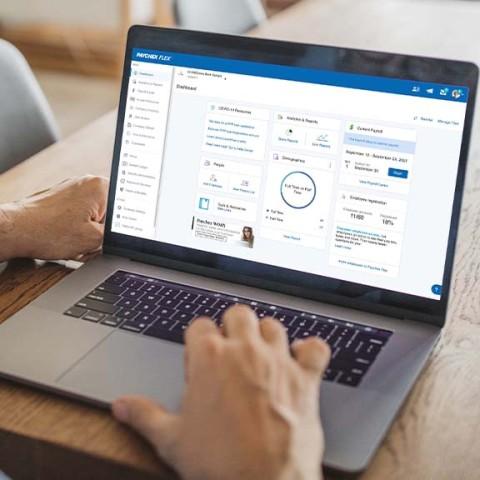- Beneficios para empleados
- Artículo
- Lectura de 6 minutos
- Last Updated: 09/12/2023
What Is a Section 125 Plan? Benefits and Options To Consider

Table of Contents
With healthcare costs continually on the rise, a section 125 plan can not only help augment your employee benefits package, but it can also offer certain employer and employee tax advantages. For instance, a section 125 plan or cafeteria plan allows employees to pay qualified medical, dental, vision, or dependent care expenses on a pre-tax basis, which can reduce their taxable income as well as their employer's Social Security (FICA) liability, federal income, and unemployment taxes (FUTA), and state unemployment taxes (where applicable).
A robust employee benefits plan is a great way to help you attract and retain talent. When selecting benefit offerings, it's important to provide options that help plan participants save money while strengthening their loyalty to your business. To help you avoid confusion, here are some quick explanations of commonly misunderstood tax-saving benefit options you can offer your employees. Paychex can help you offer section 125 plans for your small, large, or enterprise-level business today.
What Is a Section 125 Plan Designed To Do?
A section 125 plan provides employees with an opportunity to receive certain benefits on a pre-tax basis. This money is taken out of the individual's gross pay and can be used for items such as group health insurance premiums, qualified out-of-pocket medical expenses, and daycare for eligible dependents. For example, if an employee is taxed on 30% of their income and they direct $100 of their pre-tax pay to a section 125 account, they would be able to spend the full amount on qualified medical expenses, rather than only $70 received on an after-tax basis.
Under a section 125 benefits plan, employers also see a reduction in the amount of income used to determine payroll taxes, resulting in reduced tax liabilities for Medicare, Social Security, and federal unemployment (FUTA). There may also be additional savings on withholding taxes in some states.
How Do You Start a Section 125 Plan?
Premium Only Plans (POP) and flexible spending accounts (FSA) for medical and dependent care benefits are often referred to as section 125 plans because they are each described in Section 125 of the Internal Revenue Code (dependent care under Section 129). If you're considering adding one or more of these benefits, it's a good idea to review the IRS Employer's Guide to Fringe Benefits section on cafeteria plans to help you understand the types of benefits that fall under this category.
Often, a third-party administrator can be the easiest route to help you set up a new employee benefits plan and manage day-to-day administration. Many of the respondents in the 2022 Paychex Pulse of HR Survey found that to be true, citing that using HR technology helped them improve the overall employee experience, and more than half of respondents said they're likely to use such applications for benefits administration. Integrated HR technology can also help link benefits and payroll processing to ensure the proper employer and employee contributions are made and taxes are correctly calculated.
What Deductions Are Included in Section 125?
Employees can choose to deduct amounts from their gross income to contribute to a section 125 plan on a pre-tax basis. Both employee participants and employer sponsors of section 125 plans receive certain tax exemptions related to employee pre-tax contributions. Employee contributions are not subject to federal income tax. Additionally, plan contributions are typically not subject to Social Security tax or Medicare (the combined FICA tax) for the employee participant.
Employers also receive tax benefits for section 125 plans. When employees elect to make pre-tax contributions, the amounts are not subject to the employer's share of FICA taxes and federal unemployment taxes. Some state and local taxes may also be affected by these plans.
Section 125 Plan Types
As with food service, a cafeteria plan allows employees to pick benefits from a menu of offerings. Any costs beyond the maximum your company will pay then become the responsibility of the employees, paid for via payroll deductions throughout the year. Together with POPs and FSAs, as well as non-section 125 plans such as an adoption assistance plan, cafeteria plans allow pre-tax deductions, which may help employees pay less in taxes.
POP
A Premium Only Plan (POP) is a great way to save on insurance premiums with pre-tax dollars contributing to the overall cost. In combination with group health insurance, a POP reduces taxable income and results in a reduction in the amount used to determine your company's FICA and FUTA payroll taxes, as well as any applicable state taxes.
When setting up this type of plan, employee participants may have their healthcare premium payments taken out from their paychecks before taxes are deducted, which in effect reduces the amount of income used for tax calculations. If you're thinking about adding this benefit, it's important to note that a POP may only be offered by an employer with a group medical plan.
FSA
Offered solely in conjunction with a group medical plan, an FSA benefit can help employees budget for predictable out-of-pocket medical expenses, such as co-pays, routine prescriptions, or dental care. Consider how much an employee's household might spend in a year on eligible expenses such as maintenance medications (medication taken daily or weekly), yearly eye care expenses, and routine or special-need dental work. Flexible spending account rules allow pre-tax deductions to be used to fund these applicable medical expenses, and can lead to significant amounts saved each quarter and year.
Dependent Care Assistance Program
Employees who pay for the cost of caring for a child under the age of 13 or an adult dependent may contribute pre-tax funds to a dependent care assistance program (DCAP). This plan allows workers to pay for up to $5,000 of eligible dependent care expenses with pre-tax dollars, or $2,500 for those with a married filing separately tax status. Covered expenses may include certain adult or child daycare, summer camp, or the cost of an in-home caregiver such as a nanny or au pair.
Pros and Cons of Section 125 Plans
Only you can decide if and when it makes sense for your company to offer a section 125 plan to employees. In addition to medical, dental, and vision coverage, section 125 plans are a valuable, cost-saving benefit. Employees enjoy the flexibility of using these accounts so they can better control their tax liabilities. At the same time, employers can defray some of the costs associated with managing other plans.
Consider some of the benefits of section 125 plans:
- Employee tax savings: Saves employees on federal as well as most state and local withholding taxes, while helping them pay for eligible out-of-pocket expenses.
- Lower taxable income: Since funds are placed into this account pre-tax, it reduces the amount of taxable income present on a W-2 later in the year.
- Reduction of employer payroll and tax liabilities: For a business owner, a section 125 plan helps to reduce payroll and tax liabilities, including FICA and FUTA.
These benefits can help offset the initial plan setup fee and even help the company to save substantially in the long term.
While these plans have many benefits, it's important to examine the potential drawbacks of a section 125 plan before electing to use them:
- Limited time frames: Participants who put funds into a section 125 plan must use those funds during the plan year, otherwise those funds will be lost. Proper planning is essential from an employee standpoint.
- Employees fund expenses upfront: Employees are reimbursed for expenses as part of a health flexible spending account. This means expenses must be paid out-of-pocket first and are reimbursed after a claim is made. This could occur when a debit card is not offered to plan participants, or when purchasing an eligible item from a merchant that doesn't accept debit cards. Also, a letter of medical necessity may be required prior to reimbursement from an FSA for some expenses.
- Initial setup fees: For the employer, there is an initial setup fee for section 125 plans. You may want to consider the fee as a one-time investment that could provide significant long-term savings later on.
Overall, these drawbacks may not be as problematic as overpaying for other services. You may want to consider speaking to a tax professional about how a section 125 plan could impact your business directly.
IRS Regulations for Section 125 Plans
Section 125 plans offer tax benefits to both employers and employees when plans are set up in accordance with IRS stipulations. To ensure that your plan qualifies for section 125 status, you'll need to follow certain rules. First, the rules of the plan must be explained in writing and allow employees to choose between cash or taxable benefits as opposed to the qualified benefits that are available on a pre-tax basis.
When creating a section 125 plan, employers will need to consider two important rules. First, the Health or Limited Purpose FSA Uniform Coverage Rule requires that the plan's maximum reimbursement amount is available at all times throughout the year. This means that if employees opt to contribute $100 per month, they are entitled to receive the entire $1,200 benefit as of the first day of the plan year. Second, the use-it-or-lose-it-rule stipulates that participants in the plan who do not spend their entire balance by the end of the year will forfeit the remaining amount. However, the IRS does give employers the option of offering a 2.5 month grace period, or allowing participants to carry over up to $610 in 2023 to the next plan year.
Do the requirements for administering section 125 plans seem onerous? An experienced third-party administrator can offer support by helping you handle the daily tasks associated with these plans and other benefit offerings.
Section 125 Frequently Asked Questions
-
What Are the Most Common Types of Section 125 POP Cafeteria Plans?
What Are the Most Common Types of Section 125 POP Cafeteria Plans?
Common POP plans allow for the cost of premiums for medical, dental and vision insurance. Employers may also create these plans to allow for the cost of premiums for disability insurance or group term life insurance.
-
Is a 401(k) Plan Considered a Section 125 Benefit?
Is a 401(k) Plan Considered a Section 125 Benefit?
No. A 401(k) plan is a retirement benefit that allows both employer contributions and employee pre-tax salary deferrals. A section 125 benefit plan is an employer-sponsored plan that allows employees to pay the cost of eligible expenses, such as health care or dependent care, on a pre-tax basis.
-
Are Section 125 Deductions Reported on the Employee’s W-2?
Are Section 125 Deductions Reported on the Employee’s W-2?
Although not required, employers may report the total value of fringe benefits, including section 125 plan deductions, in box 14.
-
Who Needs a Section 125 Plan?
Who Needs a Section 125 Plan?
A section 125 plan is useful for any employee that must pay out-of-pocket costs for health care or dependent care. These plans generate tax savings by deducting amounts from an employee's salary on a pre-tax basis to cover eligible expenses and pay their premiums.
Get Best-in-Class Employee Benefits Today
Benefits shouldn’t be overwhelming, so let us do the heavy lifting. Employee benefits are easy to offer with Paychex.


Tags








